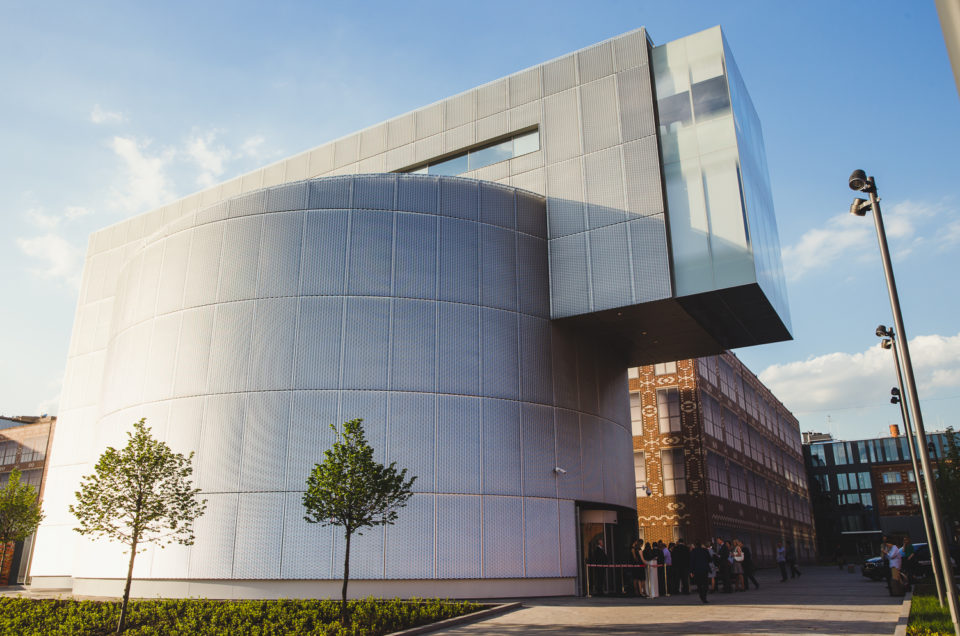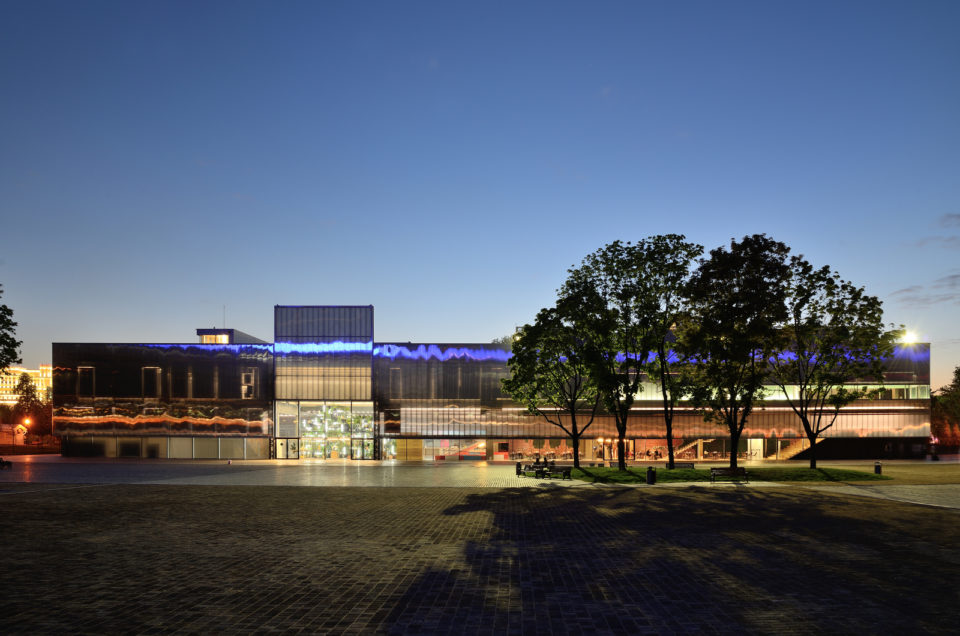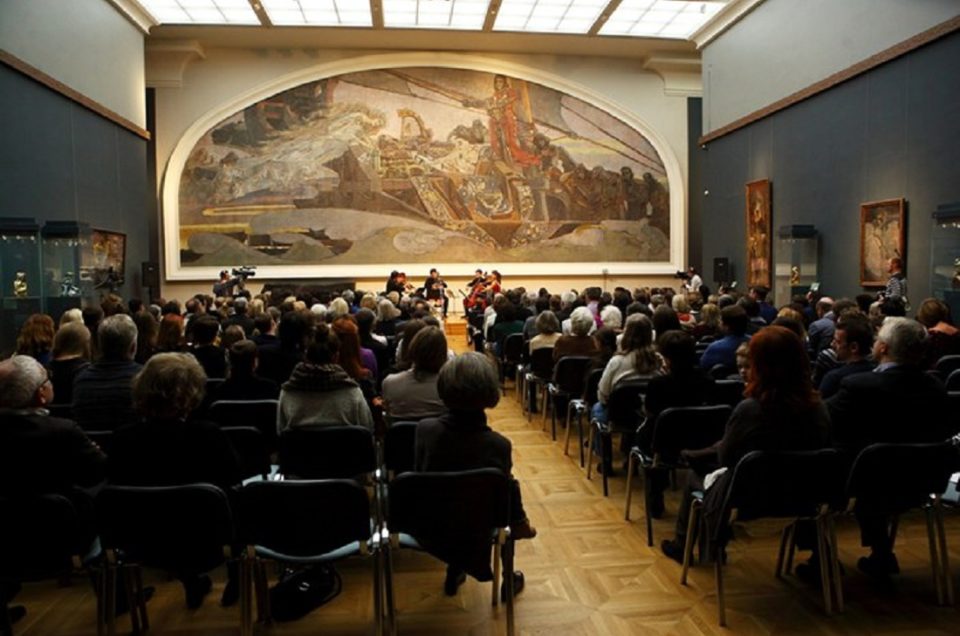The Pushkin State Museum of Fine Arts opens new season with three new exhibitions.
«OSCAR WILDE. AUBREY BEARDSLEY. A RUSSIAN PERSPECTIVE»
The «Oscar Wilde. Aubrey Beardsley. A Russian Perspective» exhibition is held as part of the UK-Russia Year of Culture 2014. The exhibition embodies a unique blend of the two cultures at work.
Over 150 art pieces are on display, including Aubrey Beardsley’s drawings and his series of prints for Oscar Wilde’s Salome. Among other exhibits are works by Russian Beardsley followers and admirers, Russian and British art magazines with pieces by Beardsley, Wilde and their followers; as well as books by Oscar Wilde, autographed works, photographs and archive materials.
Oscar Wilde’s exquisite works gave a larger audience an opportunity to learn about the ideas of Aestheticism. Aubrey Beardsley’s intricate illustrations inspired the creators behind the first Russian art magazines. They drew inspiration from the ‘art for art’s sake’ concept, the Silver Age of Russian Art being one of the greatest examples of its realization.
In Russia, Wilde and Beardsley’s artistic aesthetics were a major influence on the formation of the style and concept of the Mir Iskusstva (World of Art) movement in St. Petersburg in the 1890 s. However, the two artists reached their peak in popularity in Russia in the 1900 s. At the time, Scorpion and Grif publishing houses printed Oscar Wilde’s major works, along with the works of Russian decadent poets. Scorpion and the Vesy literary magazine played a greater role in the development of the Moscow Beardsley-inspired artistic community. Beardsley’s sophisticated arabesques influenced artists such as Konstantin Somov, Leon Bakst, Nikolay Feofilaktov, Miss (Anna Remizova-Vasileva), Sergei Lodygin, and Dmitriy Mitrokhin.
23.09.2014 – 30.11.2014 19th and 20th Century European and American Art Museum
«BRITISH DESIGN: FROM WILLIAM MORRIS TO THE DIGITAL REVOLUTION»
The exhibition «British design: from William Morris to the Digital Revolution» will take part within the UK-Russia Year of Culture 2014. Pushkin Museum will host chamber in composition, but fundamental in content exhibition – art of design dialogue of XIX and XXI centuries. The exhibition will feature 12 exhibits of famous artists and designers of the XIX century from the collection of the Victoria and Albert Museum (London) and 20 works by contemporary designers.
The design originated in the middle of the XIX century in the UK, a country where the industrial revolution had started. During that period, production became serial, machine replaced artisan. Emergence of Arts and Crafts Movement in the second half of the XIX century that largely determined the development of the design of the early twentieth century was a reaction to the changes.
Leader and ideologist of the movement – William Morris, advocated the preservation of the rich national traditions of arts and crafts. A synthesis of architecture, painting and decorative arts are in the basis of his art system.
Contemporary of William Morris – Christopher Dresser became the first independent and commercially successful industrial designer. Dresser was looking for new visual forms – aesthetically pleasing, but not requiring for implementation of complex industrial technologies. The idea of synthesis of the William Morris’ arts and Christopher Dresser’s functional approach identified the further development of British design.
In the twentieth century, digital technology replaced analog and mechanical ones. Computer modeling, 3D printing, laser cutting has already been used for the production of finished industrial products. This process was called “digital revolution” or “new industrial revolution”.
The exposition «British design: from William Morris to the Digital Revolution» is based on the principle of dialogue between objects created in the XIX and XXI centuries. It will make a brief excursion into the past and future of British design from the classics of the XIX century to the major trends of today.
03.10.2014 – 30.11.2014 Main Building
«IN THE STREAM OF TIME…» PORTRAIT PHOTOGRAPHY FROM THE LOLA GARRIDO COLLECTION
The exhibition «In the Stream of Time…» – a curatorial project that is based on the private collection of the Spanish collector Lola Garrido. The richness of the collection, which includes originals and vintage prints by classics photography art from the end of XIX to the beginning of the XXI century, allowed allocating a separate topic – the portrait.
The exhibition will feature 84 photos by renowned photographers such as Julia Margaret Cameron, Diane Arbus, Nan Goldin, Alfred Stieglitz, Cindy Sherman, Man Ray, Robert Capa, Horst P. Horst, Philippe Halsman, William Klein, Henri Cartier-Bresson, Dorothea Lange, and Robert Mapplethorpe. It includes photographs of Marilyn Monroe by Bert Stern, Marlene Dietrich by Martin Munkacsi, Varvara Stepanova by Alexander Rodchenko, George Bernard Shaw by Edward Steichen and many others.
Portraits of Marilyn Monroe and Marlene Dietrich, Varvara Stepanova, and George Bernard Shaw coexist with portraits of ordinary people in this exhibition.
Among the exhibits there will be presented the first color photographs – autochromes – by one of the greatest pictorialists of the early twentieth century – Edward Steichen. Autochrome focused attention on the relationship between photography and painting, enabling the display of color, but excluding any possibility of manual intervention in the image.
Collection of Lola Garrido is one of the most important in Europe. Most of the works that are presented at the exhibition will be shown in Russia for the first time.
12.10.2014 – 18.01.2015 Private Collections Museum


